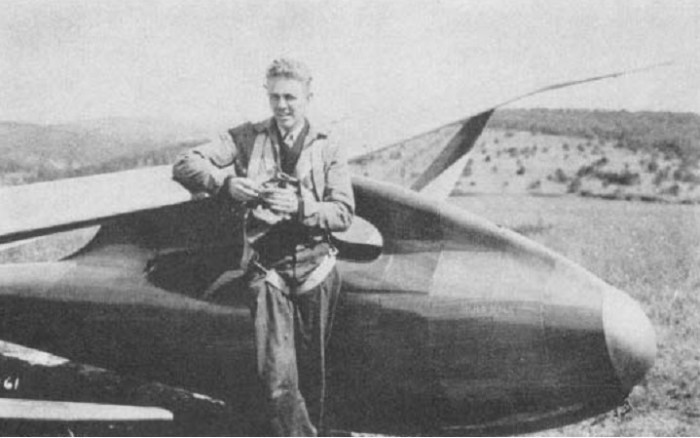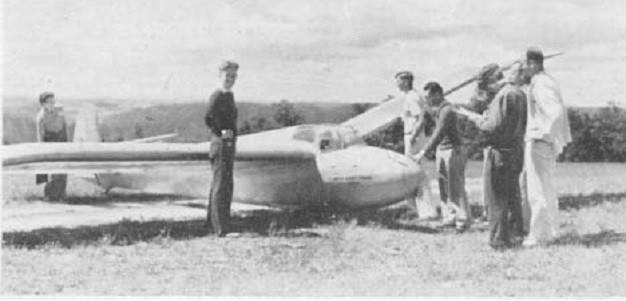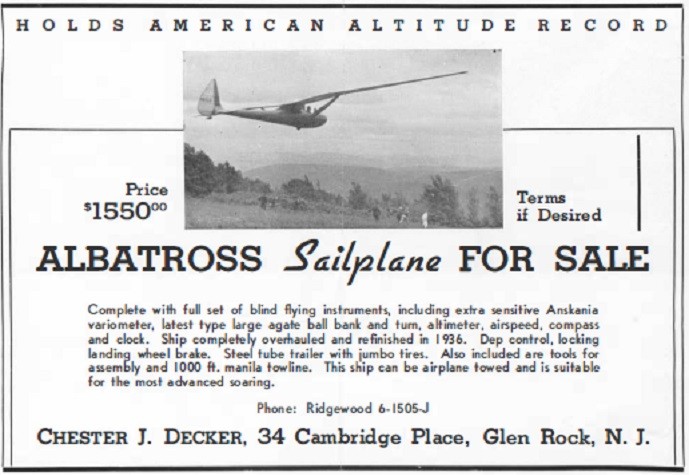Chester Decker
1978
about
( 1914 -1985) SSA Treasurer; World/National Records; National Competition; WW II Military Glider Pilot
Awards
Evans Trophy 1936, 1939; Silver #8 1936 (Int #240); Gold #3 1939
Bio

Chet came to the 1933 National Soaring Championships in Elmira, New York, as a member of the North Jersey Soaring Association. He was a teenager with an unbounded eagerness to soar. It was not until 1935 that he entered as a pilot flying a Franklin PS-2. Unfortunately, the pride of Glen Rock, New Jersey, was entered in the Utility Class and not the Sailplane Class. His performance was outstanding, first in duration and altitude and second in distance, and he received an award as the outstanding junior pilot.
Prior to the 1936 championships, Chet purchased Lewin Barringer's Bowlus-du Pont Albatross. In the previous years, he has listened closely to the meteorologist and experienced pilots. This knowledge, together with his great competitive spirit, garnered Chet the 1936 National Championship and Silver Badge No. 8.

In 1939, after having finished third to Richard du Pont and to Emil Lehecka respectively in 1937 and 1938, Chet entered the contest flying Dick du Pont's Minimoa. He was competing against the likes of Robert Stanley, Emil Lehecka and John Robinson. Chet won convincingly, 10 cross-country flights in 16 days of competition, five more than 100 miles and the longest 233 miles. He also earned Gold Badge No. 3 .
He finished his competition career with a second place in 1940 and a third place in 1941, both behind John Robinson. Chet was held in great esteem by his fellow pilots for his friendly manner, great pilot ability and his outstanding sportsmanship.
With the coming of the draft, Chet opted for military service in the Air Corps and enlisted in the Aviation Cadet program. Shortly after earning his silver wings, he received orders to the Glider Branch at Wright Field, Ohio. Chet was a typical citizen soldier, a job to be done and a war to be won. He applied his considerable skills to the flight testing of training and cargo gliders, towplanes and towing techniques, and to the development of glider retrieving systems and equipment.
It was his practical suggestion that the Douglas C-47 production capability be used to produce cargo gliders, which resulted in the development of the XCG-17 project.
With the war over, Chet returned to civilian life and established a business, a home and raised a family. He never quite got back to soaring but in recent years he found his Albatross in bad repair, had it restored and gave it to the National Soaring Museum. He had been honored by election to the New Jersey Aviation Hall of Fame and to the U. S. Soaring Hall of Fame.
Chet Decker was awarded the Evans Trophy in 1936 and 1939, He earned Silver #8 (Intl #240) in 1936 and Gold #3 in 1939.
Adapted from In Memoriam by Floyd Sweet, Soaring, September 1985, page 37
